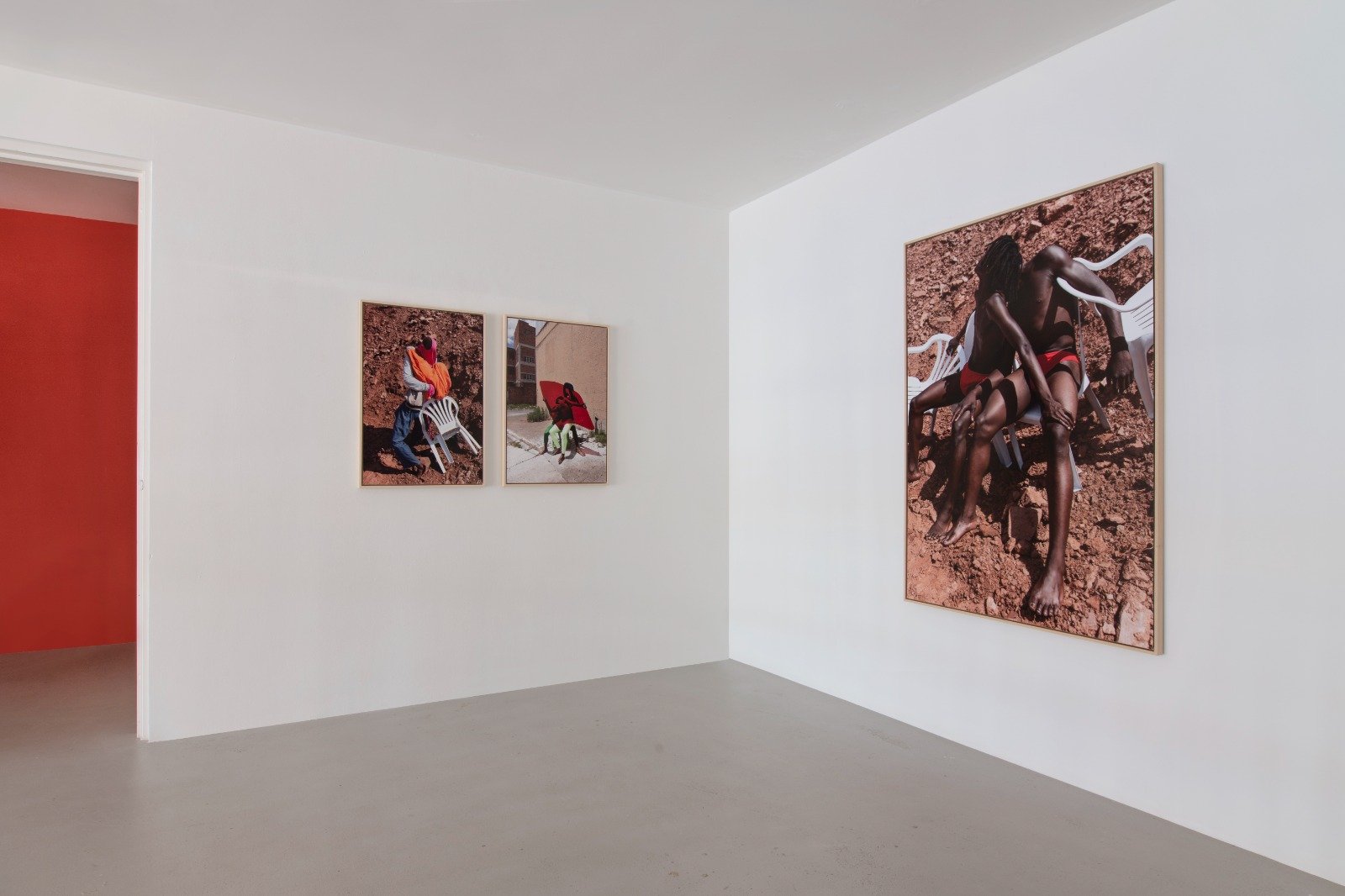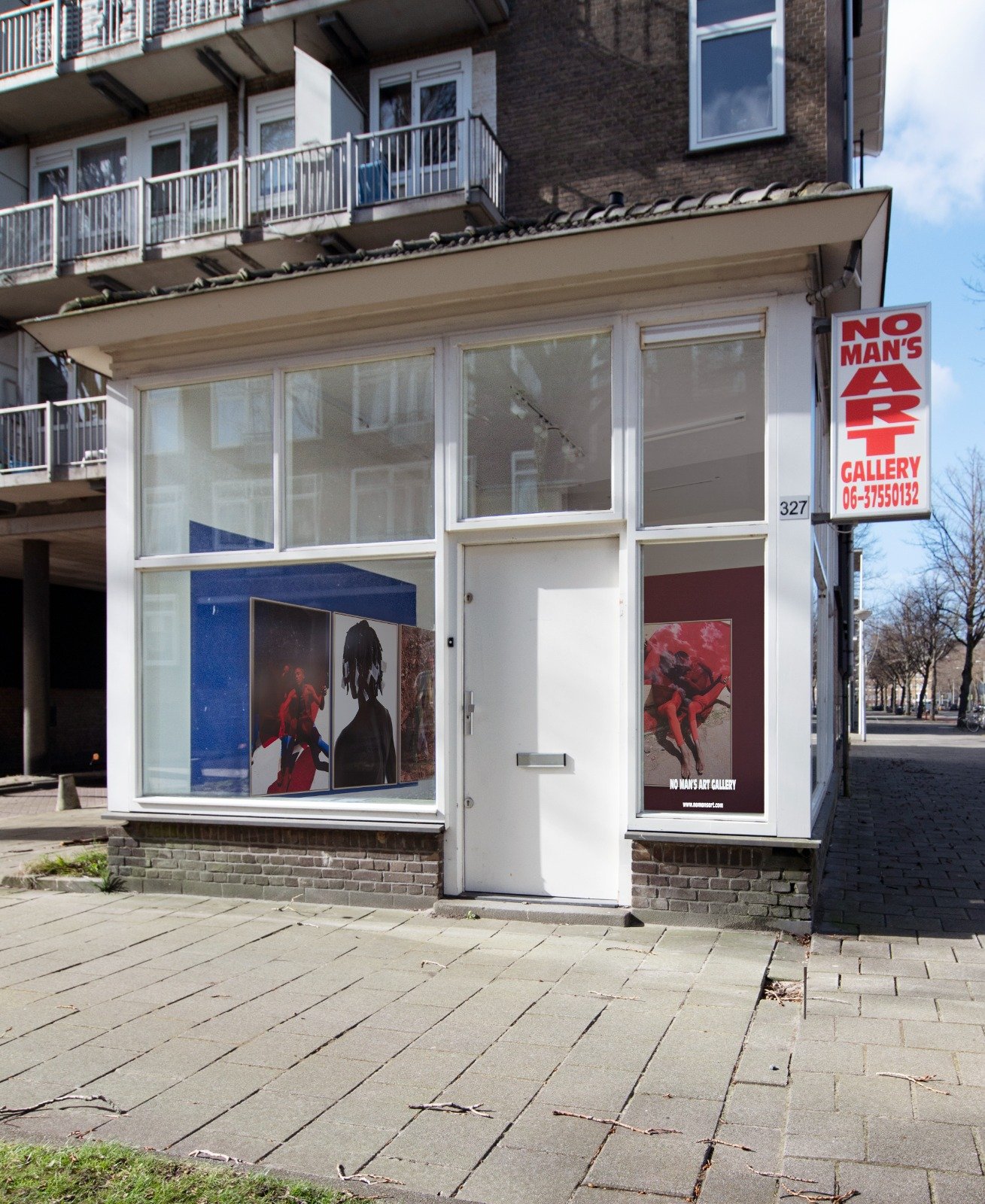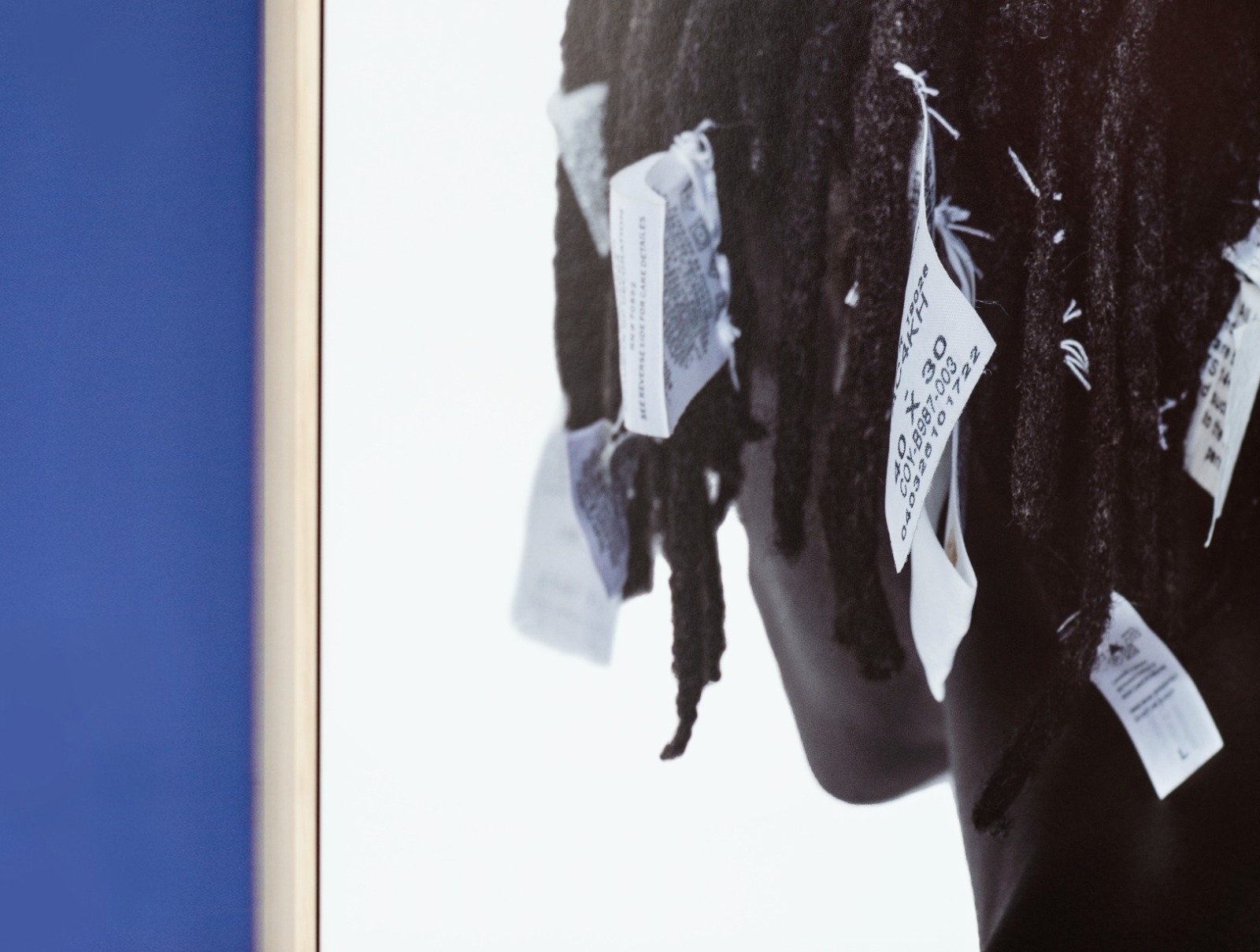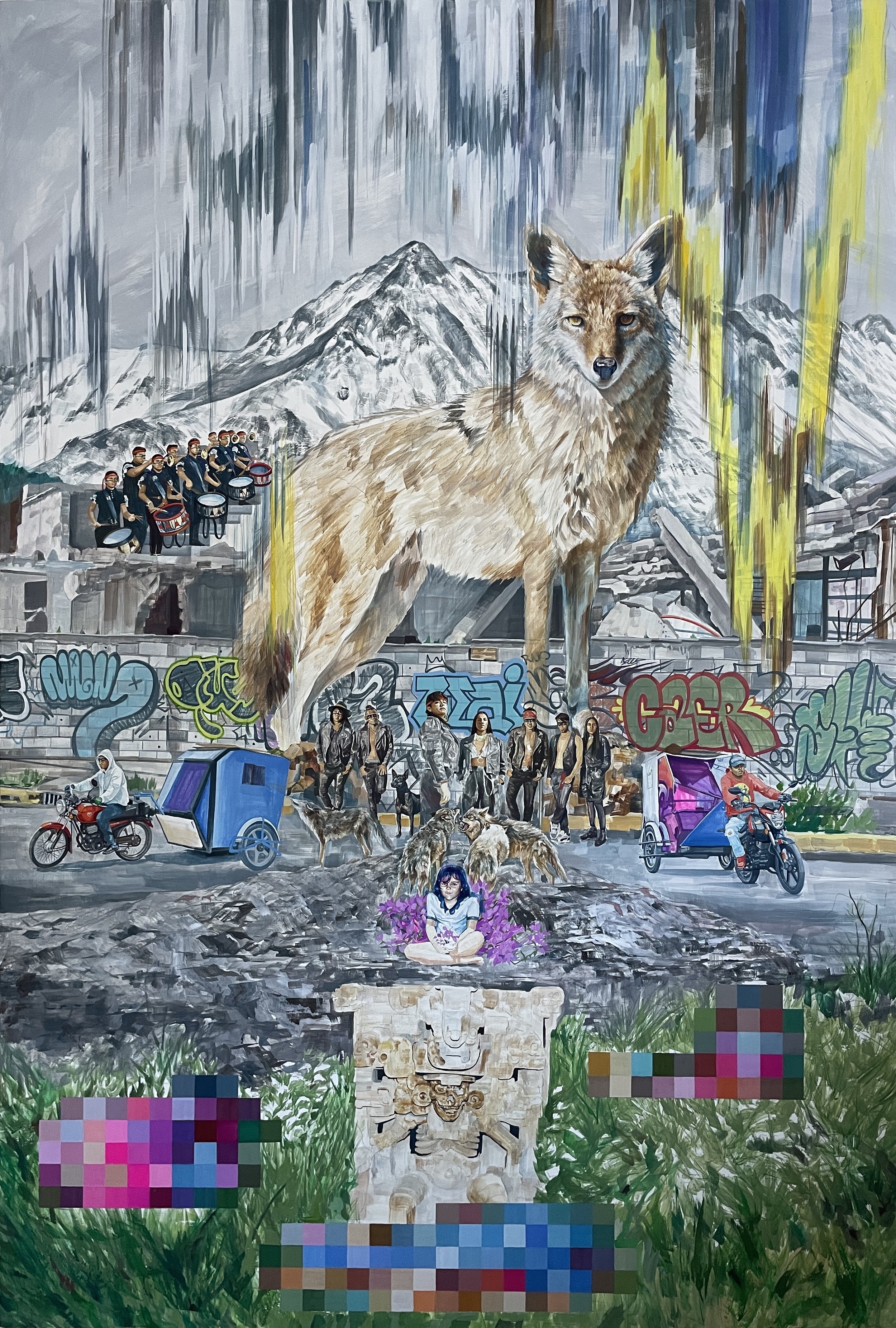
SPECTRUM | Jamal Nxedlana
Press:
- Weekendtips van Mitchell Esajas: SPECTRUM by Jamal Nxedlana, Het Parool, 2023
- Elle Decoration, Mexico, 2024
SPECTRUM
Opening Saturday March 11 / 5 - 8 PM
11 March - 16 April 2023
Artist Talk with Jamal Nxedlana
Thursday April 6th / 6 - 8 PM
RSVP (free admission)
No Man’s Art Gallery is honoured to present SPECTRUM, the second solo exhibition by Jamal Nxedlana at the gallery. The exhibition showcases a new series of images that continues his exploration of topics such as race, masculinity, post-colonialism and consumer culture, with a particular focus on the representation of the black body in fashion photography. Nxedlana is a visual artist and cultural organizer who is recognized for establishing initiatives and projects that support the South African arts community, including Bubblegum Club, a digital platform and culture agency that promotes innovative work and emerging cultural workers.
His first solo exhibition at No Man's Art Gallery, AVATAR, celebrated the creativity of Johannesburg's cultural scene, using their work and personal style as statements of mystery and beauty. Nxedlana created a mythology in which new gods and spirits emerge from a moment in the city’s history (2016-2019) where Nxedlana felt in sync with his contemporaries. While his subsequent global exhibitions garnered attention, the lens through which his work was viewed failed to recognize its multifaceted nature. SPECTRUM examines black portraiture and the artist's path towards abstraction of the black body, presenting a complex series of photographs that resists any singular perspective on black identity.
In SPECTRUM, Nxedlana continues to refine a visual language that incorporates and reflects on objects that are ubiquitous to his context, such as the monobloc chair. It functions as a symbol in itself, but it also appears in dialogue with the artist, recognising the chair as contextually problematic; its provenance suggestive of the unsustainable relationship between the African continent and the rest of the world. “A dumping ground” for cheap products, plastic, clothes; what the world doesn’t seem to want or need anymore. Simultaneously, the omnipresence of the chair has caused it to become part of the visual culture of the artist. The chair reflects the multiplicity of meanings and values encountered along the route of limitlessness and abstraction. A contraction that turns one object into a mindful discussion on identity and questions a tangible encapsulation of the Black experience. “The chair is a way to speak to multiplicity”.
Experimental manipulations with translucent perspex create a prism effect that further informs of the dimensionality and separational nature of the work.. The perspex reflects the shapes of the city of Johannesburg and further entangles the bodies that hold it up. The shape mimics some of the properties of the monobloc chair and enters a symbolic space that allows it to extract abstraction and expression from the deconstructed bodies and objects. The careful combination of these elements provides presented scenes with a wonderfully sharp sculptural quality. Overlapping, layered, and intangible, Nxedlana brings together different symbolic elements and plays with their potential in a way that results in an patchwork organism that can be at any point spotlighted and broken apart into limbs.
Location: NMAG KIOSK, Willem de Zwijgerlaan 327 and NMAG, Bos & Lommerweg 88 (this exhibition extends to both gallery locations)
Photos: Neeltje de Vries
Jamal Nxedlana (b. 1985, South Africa) is a visual artist and cultural organiser living and working in Johannesburg, South Africa. He is the founder of a number of independent organisations that support the South African arts community among which is Bubblegum Club, a digital platform and culture agency showcasing innovative new work and creating opportunities for emerging cultural workers. He is also a founding member of CUSS Group, a Johannesburg-based artist collective that has been exploring the hybrid culture of post-colonial South Africa over the past decade. As a solo artist, his practice addresses the portrayal of the black body in fashion photography while exploring themes of race, masculinity, post-colonialism and consumer culture.
Jamal Nxedlana has exhibited in galleries, institutions and independent spaces internationally. Most recently, his images were featured in the collective shows The New Black Vanguard curated by Antwaun Sargent and Orlando curated by Tilda Swinton.
Jamal Nxedlana by Senay Berhe

Lejano de todas partes | Alejandro Galván
online catalogue
Lejano de todas partes
Opening Saturday September 3rd / 6PM - late
4 September - 16 October 2022
No Man’s Art Gallery is honoured to present Lejano de Todas Partes (far from everywhere), the first solo exhibition by Alejandro Galván (1990, MX). Lejano de Todas Partes follows an intensive residency period of the artist in Amsterdam. The gallery invited Galván to join the residency programme after a series of studio visits in Mexico City earlier this year.
Alejandro Galván is a painter who lives and works in Nezahualcóyotl (Neza), one of the most populated and dense areas of Mexico City. Neza is part of the State of Mexico, an area that comprises several municipalities on the outskirts of the centre of Mexico's capital. It has a complex history of governmental neglect, violence and marginalisation and at the same time houses a proud community with a strong sense of togetherness, the warm home and heart of the working class. These dualities are visualised in the artist’s large scale paintings of watercolour, ink, gouache and charcoal on wooden panels. Rich pictorial scenes reference cityscapes that include pre-hispanic culture and Mexican mythology combined with Catholic imagery, manga inspired figures together with medieval bestiaries and newspaper coverage of disturbing scenes next to intimate portraits of the artist’s family, female figures important to him and his neighbours.
Each painting is honoured with a Quinametzin, an Aztec titan that appears as a beast or figure and symbolises a particular place, its energy and its people. In Coyotl (2022), it is the proud coyote with its piercing gaze surrounded by the white tops of the mountains of El Nevado de Toluca. Female members of the underground Neza-based punk band Los Congolones are depicted as strong and powerful contemporary Mexica (Aztec) warriors on the streets the artist took daily on his way to the subway station of Pantitlán. This terminus is an important junction of el barrio where large crowds cross paths.
In Coyotl (2022) Galván evokes the pride of his home town, by visualising communal resistance and creativity despite unruly grounds. At the heart of the painting a young innocent girl is seated amongst bougainville flowers that have symbolic value in the Mexican feminist movement. The concrete hill that surrounds her is an accidental monument that once started as a communal dumping ground for dead animals. To block the stench of rotting flesh, the dumping ground was covered in concrete and a fertile land grew on the excess of organic material. The transitional power of death to creativity is emphasised by the presence of Mictlantecuhtli, god of death, gatekeeper of the underworld in ancient Tenochtitlan on which ruins today's subway station of Pantitlán is built.
The intricate pencil drawings centre around the concept of the Quinceañera, a rite of passage celebrated amongst all social classes in Mexico and throughout Latin America dating back to pre-hispanic times. It marks a girl's 15th birthday, the transition from childhood to womanhood. El Sombras (2022) and Quinceañera (2022) are set in the infamous Iztapalapa. Only inhabited for half a century, the area has now grown into one of the most densely populated peripheral municipalities, claiming mountainous territory like parasites. The drawings both honour the quinceañera and emphasise the traditional gender roles that are imposed on a young woman in a society where machismo rules and womanhood is envisioned through the man’s gaze, either being objectified or labelled with the sole purpose of being a mother.
The diptych Las Estrellas Me Iluminan Al Reves (2022) builds on a passage from Bernardo Esquinca’s novel ‘Carne de Ataúd’, set in the largest dump of Neza: Bordo de Xochiaca. The dump is enclosed by shacks held together by discarded banners of political parties. It is a place the artist often visited for its soccer field, which is located right in its centre. A devil masked eagle, with black chicken feet as claws, a floating serpent’s head, standing on a trash belt. The transformation of the Mexican coat of arms is a metaphorical display of black magic, a reverted energy of sorts. Under the wings of the Quinametzin eagle the famous Alfredo Guttierez sings El Solitario about a drunk man that drinks to forget, hoping for a new beginning, feeling that in life the stars have illuminated him in reverse:
Vivo tomando porque es el trago es pa’los machos
Un desamor me puede causar la muerte
Y si el mar se convirtiera en aguardiente
En el me ahogara para morirme borracho
The triptych Río de la Compañía Mateo 14:22-33 (2022) is set in a similar environment as Las Estrellas Me Iluminan Al Revés (2022). The river borders Neza, Chimalhuacan and San Lorenzo. None of the municipalities bordering the canal govern this area, which has made this no man’s land a place where animals, trash and bodies are dumped. In his childhood Galván crossed the bridge from Neza to Chimalhuacan every weekend to play with his cousins. The loving memories of his childhood are merged with the smell of trash and clouds of dust from unpaved roads. Only through reading the newspapers he learned to know its darker side. Río de la Compañía Mateo 14:22-33 (2022) shows a procession, towards what or whom is unknown, but the act itself demonstrates a sense of hope and belief. Taken from a biblical scene (Matthew 14:22-33) Galván honours the people of the area by letting them walk on water. Río de la Compañía Mateo 14:22-33 (2022) shows sacrality is everyday life, a miracle of the common people, a metaphorical image of human agency.
The opening of Lejano de todas partes coincides with No Man’s Art Gallery’s 4 year anniversary party, the official afterparty of the opening of the cultural season. The exhibition extends to both gallery locations: NMAG Kiosk, Willem de Zwijgerlaan 327 and NMAG Bos en Lommerweg 88
Photos: Neeltje de Vries
Alejandro Galván (1990, MX) is a painter who lives and works in Nezahualcóyotl, the most populated and dense area of Mexico City. He graduated from La Esmeralda, Mexico City’s most prestigious art academy in Fine Arts in 2016. Galván won the Young Mexican Prize 2020 promoted by the UK Mexican Art Society in London, England.Recent exhibitions include “Diálogo abierto: San Carlos/La Esmeralda”, The National Center of Arts (CENART); the Vasconcelos Library: the Pablo Goebel Fine Arts Gallery; Ecatepec Contemporary Art Museum (MArCE); Salón ACME. Galván is currently part of the FONCA ́s Young Creators program.















